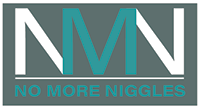As remedial massage therapists, you may not realise that in addition to using hands-on techniques, we are trained in the application of tape to enhance treatment outcomes and facilitate healing and improved performance.
There are a lot of different types of tape on the market these days, ranging from kinesiology (or dynamic) tape, rigid tape, fixomull, overwrap to name a few …
The two main types of tape used in the massage industry are kinesiology tape (this is the brightly coloured stuff that you often see athletes wrapped in!), and rigid tape. Each serve their own specific purpose for assisting with pain reduction, recovery enhancement and improved function & performance.
Kinesiology Tape (also known as Dynamic Tape; Kinesiotape; K-Tape; Rocktape)
As remedial massage therapists we tend to gain the most benefits with our clients from kinesiology tape because it can aid in pain management, rehabilitation, circulation, oedema/swelling reduction, postural correction, recovery and muscle endurance.
Also commonly called dynamic tape, kinesiology tape is a stretchy tape which is very pliable so this allows us to place the tape exactly where it needs to be, for example curving the tape around a knee or around the shoulder without the tape crinkling or peeling back off the skin. This allows us to change the amount we stretch the tape to create a lifting effect on the skin.
This lifting effect provides the brain with a sensory signal and as a result can dramatically change the information coming from a body part to the brain, and then the brain to the affected area. This can be helpful for reducing pain & improving body awareness. In the same way we will rub our elbow if we knock it the tape provides a soothing sensory signal to help calm the nervous system. It’s almost like giving the area a warm hug!
Kinesiotaping aids recovery via promoting better circulation and superficial fluid/lymphatic movement.
The fluid movement is helpful because the body engages a natural inflammatory process to be able to heal. This inflammatory process brings in new cells to initiate the healing process and take away the damaged cells. Accelerating this process using K-tape speeds up the recovery process from exercise and injury.
Kinesiotaping a body part improves awareness of where the body is in space, and so can be used as a tool to improve postural awareness, for example – learning how to hold your shoulders back in good postural position to reduce back, shoulder and/or neck pain.
The improved body awareness (and coordination) from kinesiology tape also helps enhance muscle endurance and reduce fatigue. This is particularly important when it comes to physically demanding tasks, either on the sporting field or at work.
Rigid Tape (also know as Physio Tape or P-tape)
Rigid tape (usually brown, sometimes white in colour) is typically used to support a joint or restrict a potentially damaging movement. It is predominantly used as a short-term intervention to help with an acute injury, or when returning to sport for joint stability while the strengthening process is still ongoing.
The aim is always to try and get our clients strong enough that they do not need to depend on rigid tape to support their joints.
Rigid tape lives up to its name because it does not have any stretch or flexibility. This is why it provides such effective joint support.
When this tape is applied it is placed on the skin with no tension as the different layers and weaving of the rigid tape provide it’s strength. If tension was to be placed on this tape around a joint, it has the potential to cut off the circulation and irritate or cut the skin.
We always use rigid tape in conjunction with a strengthening, stretching and massage routine because we do not want our clients to become dependent on the tape. If this happens the joints may become very lax and can give way even during times of general movement.
As the joint becomes stronger and range of motion is regained we start to decline the amount of rigid tape used to support that joint.
So to wrap things up!
At the end of the day, each type of tape has their appropriate place and time, and will always need to be used with other recovery and strengthening techniques to gain the best results from them.
It is worth noting that regardless of which type of tape is being applied, there is always some trial and error involved to figure out what works best for each client, and tape can only work at it’s best in conjunction with other appropriate therapeutic treatments eg. Massage, dry needling, mobility etc.
If taping seems like it may be an effective strategy to help you reach your health and performance goals, your therapist will be able to advise you on the type and brand of tape that should work best, and will work with you to demonstrate how to best apply the tape.
